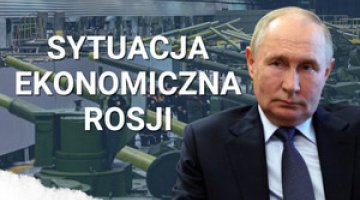Russia’s demonstrative response to US sanctions
On 22 May, the Russian State Duma adopted a law on measures to counter the hostile actions of the United States and other countries (the so-called counter-sanctions law). In the coming days it will be adopted by the Federation Council and signed by the President. The law includes six general potential restrictions, which the Russian government may apply at the President’s request in response to the hostile actions of the US and other countries. These include: ceasing or withholding international cooperation with these countries; prohibiting or restricting the import from them of selected goods or raw materials into Russia; prohibiting or restricting supplies to them of selected Russian goods and raw materials; prohibiting or restricting the use by Russian state and local government institutions and selected legal entities of services provided by entities under the jurisdiction of states hostile towards Russia; prohibiting or restricting participation in the privatisation of Russian property or the organisation of privatisation processes by legal entities from states hostile towards Russia.
The law is a much less restrictive version of a project which in its original version contained 16 quite specific measures, mainly economic in nature, which the Russian government could (at the President’s request) have applied to the United States and other countries implementing sanctions against Russia. These included: a ban on the imports of drugs, alcohol, tobacco products and agricultural products; a ban on cooperation with Russian companies in the nuclear sector and the aircraft industry, and on providing consulting, audit and legal services; ceasing Russian supplies of certain goods (including rocket engines); suspending Russia’s application of intellectual property rights to companies from the United States and its allies; raising the navigation charges for overflights through Russian airspace.
In addition to the law on counter-sanctions, the Russian Duma is also discussing amendments to the Penal Code introducing criminal liability for natural and legal persons from Russia and abroad who comply to the sanctions imposed on Russia (a fine or imprisonment for up to four years), or who assist in the introduction of new sanctions by providing information or recommendations (a fine or imprisonment of up to three years). After the first reading of this project (15 May), the Duma decided to hold consultations with business on the law.
Both legal initiatives encountered criticism from business circles (both private and state businesses, in Russia and abroad). According to media leaks, even part of the Russian government (the Federation Council, certain ministries and the President’s Administration) have expressed reservations about the original draft law on counter-sanctions.
Commentary
- Both the law on counter-sanctions and the revisions to the Penal Code for supporting the sanctions are part of the Russian authorities’ demonstrative response to the new US sanctions and the threats to expand them. The adoption of the law on counter-sanctions is a response to the adoption by the US Congress of Countering America’s Adversaries Through Sanctions Act (CAATSA, July 2017), which among other measures introduces sanctions against Russia and the expansion of US sanctions against the Russian Federation (on 6 April 2018). This move by Russia is merely a political gesture, because the Kremlin is afraid of introducing genuinely serious sanctions against the United States. Their negative consequences would in fact cause more harm to Russia than to the United States, and could provoke the US into sharpening its sanctions yet further, which would be dangerous for Russia. This is due to the significant imbalance (to Moscow’s detriment) in economic potential, bilateral trade relations and international influence between the US and Russia.
- The plans to introduce penalties for supporting sanctions against Russia is mainly intended to intimidate the opposition and independent groups within Russia itself. In that regard, it fits in with the Kremlin’s policy of strengthening of its hold over Russian business and society. However, the formally extra-territorial nature of the proposed changes poses a potential threat for Western (especially European) companies on the Russian market. Because no important (especially Western) companies are likely to risk sanctions from the US to avoid Russian penalties, Western investors could end up withdrawing from the Russian market, which would further damage the already poor investment climate in Russia. For this reason, we should expect this project to either be toned down or only selectively applied.
- Both of these bills, although they meet the Kremlin’s expectations, also result from the excessive zeal of the representatives of the Russian Parliament (particularly Vyacheslav Volodin, the speaker of the State Duma), as they compete to show their loyalty and usefulness to President Putin. Thanks to the instrumental use of conflict with the West, the Duma’s deputies have been trying to strengthen their own position in the system of power. The original, more radical shape of the counter-sanctions act was most likely the result of an initiative by the Duma itself, and was not specifically consulted with the government or the President’s Administration.
- While the alleviation of the counter-sanctions law, at the behest of the Kremlin, partially harms the image of the State Duma and its speaker, it is primarily a gesture towards the Trump administration. The intention is to suggest that Russia wants to avoid escalating the conflict with the United States. Most likely, Moscow is still counting on the Putin-Trump meeting, highly anticipated in Moscow,, and that it will succeed in convincing the President that his administration should withdraw from its policy of tightening its sanctions policy towards Russia (which would in addition stoke the internal political conflict within the American elite). On the other hand, Russia probably hopes that the rising tension between the United States and its main Western European partners (especially Germany) over trade disputes and the sanctions against Iran will foster a breakdown of European solidarity with the United States on the issue of sanctions against Russia.
- Both bills carry potential risks for Russia’s economic (and political) relations with other countries. Moscow is threatened with a loss of revenue from the sale of goods and raw materials, shortages of goods on the domestic market, and in the long term, further isolation from the world economy, a worsening investment climate, and a drop in investment and a permanent loss of markets. Against this background, it is no surprise that there has been sharp criticism of the bills’ provisions from both Russian and foreign business. Criticism of the projects has come, among others, from the President of the Russian Association of Industrialists and Entrepreneurs Aleksandr Shokhin, the oligarch Viktor Vekselberg and the Association of European Business in Russia. However, public criticism from businesses closely linked to the Kremlin and from representatives of state-owned Russian companies is a novelty. Among others, the head of the state-owned VTB bank Andrei Kostin said that the introduction of criminal liability for Russian entities complying with American sanctions on the territory of Russia is unacceptable, and declared that his bank would suspend its cooperation with the companies owned by the oligarch Oleg Deripaska, who has been covered by the recent US sanctions. The planned legislation had also been previously criticised by representatives of VSMPO-Avisma (a leading manufacturer of titanium, whose partner is the state company Rostekh, owned by Putin’s friend Sergei Chemiezov). This shows that the radical anti-Western policy initiated and supported by the Kremlin is provoking growing resistance within the wider Russian elite.
Iwona Wisniewska, collaboration: Marek Menkiszak
Appendix: Russian-American economic cooperation
Russian and American statistics differ significantly from each other. According to US data, trade flows between the two countries amounted to US$24 billion in 2017 (US exports to Russia US$7 billion, and imports US$10 billion), whereupon the United States had a US$10 billion trade deficit. According to Russian statistics, the turnover amounted to US$23 billion (US exports to Russia numbered US$12.5 billion, and imports US$10.7 billion), and Russia has noted a deficit of nearly US$2 billion. The differences in the statistics are the result of different methodologies being applied (for example, Russian statistics are calculated on the basis of the country of registration of the vendor/customer, and not the country of origin of the goods).
A clear imbalance is apparent in trade between the two countries in terms of commodity structures, as well as both partners’ mutual importance to each other. Russia mainly exports raw materials to the United States (fuel, iron ore and steel, chemical products, non-ferrous metals, including aluminium and titanium), and imports processed goods (machinery and equipment, aircraft, vehicles, medical and optical instruments). The US’s share in Russian imports is 5.5%, and 3% in exports, while the importance of Russia as a trading partner for both imports and exports is minimal, well below 1%.
In 2016 (the latest available statistics), Russian imports of services from the US (according to the Central Bank of Russia) amounted to US$4 billion (mainly consulting, legal and engineering services, as well as IT services), and US$3.4 billion of service exports (consulting, legal and IT services, as well as copyright).
The mutual investment of both countries is limited. US cumulative direct investments in Russia amount to more than US$10 billion, mainly concentrated in the manufacturing industry, the mining sector (ExxonMobil in the Sakhalin-1 project) and trade. Russian direct investments in the US amount to around US$4.5 billion.
From Thomson Reuters’ estimates (the Country of Risk Model) companies’ financial exposure to different countries,, it appears that American corporations made more than US$90 billion in revenue from their business in Russia in 2017, primarily in the food and beverages sector (for example, PepsiCo’s revenue in Russia in 2017 amounted to over US$3 billion), as well as the technology and pharmaceutical industries.
Russia’s economic dependency on the United States mainly derives from the position of the United States, US companies and the US dollar in the global economy. As a leader in the global economy, the US has the opportunity to wield influence (for example, through its banks) on the policies of companies from other countries (such as the EU member states, China and India) to discourage them from cooperating with Russia. Russian foreign entities are listed on foreign stock exchanges, and they are quite heavily dependent on foreign debt (a total of over US$500 billion); the foreign exchange reserves of the Central Bank are largely invested in US dollars, and in addition, a large percentage of Russian exports (including oil and gas) are also denominated in US dollars. This means that the US has a large impact on Russia’s financial market, as the recent US sanctions (April 2018) on selected Russian corporations have demonstrated. The aforementioned measure led to a massive withdrawal of foreign investors with shares in these companies, and forced Russian entities to make early repayments of their loans and suspend export contracts denominated in US dollars.




